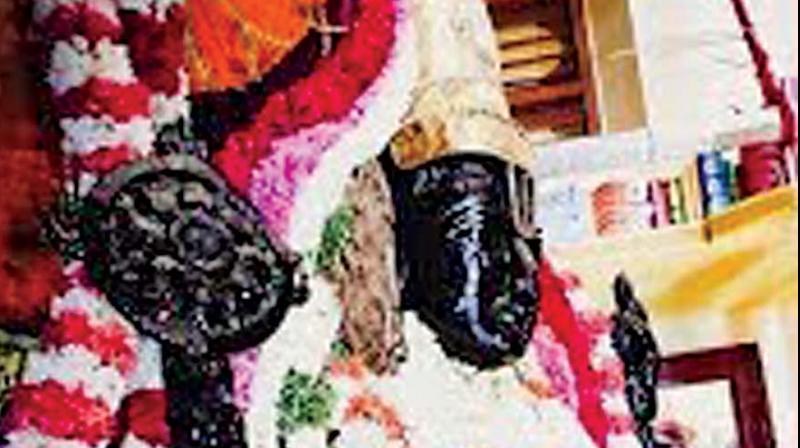Athi Varadar darshan now in standing posture
He is 12-feet tall, two-and-half feet wide.

Kancheepuram: At dawn on Thursday, Athi Varadar will offer darshan in ninra thirukolam (standing pose) to bless multitudes of his devotees pouring into this temple town from all over the country and even beyond.
Chief Minister Edappadi K Palaniswami had announced this change from the Lord's sayanam (reclining) posture after being taken out of the Sri Varadaraja Perumal Temple tank on July 1 for public worship through 48 days before immersion on August 17.
The doors of Vasantha Mandapam, where the deity had been placed for worship all these days, were closed at 5 pm on Wednesday after the administration provided prior notice to the public about the closure of darshan during the change of posture. The doors would be opened at five in the morning to resume darshan, but in standing position for the next 17 days, officials said. He is 12 feet tall, and two-and-half wide.
They said close to 45 lakh devotees have had the divine darshan so far and the crowd density could increase further as the day of immersion draws close - there is also a serious debate and strong recommendation from certain influential sections of Hindu seers to retain Athi Varadar in the temple instead of returning the deity to the slushy tank bed that could be further polluted by human interference. "We are expecting more than two lakh bhaktars (devotees) per day for the remaining 17 days", said an officer, adding that no decision has been taken, yet, on the demand to retain the deity in the temple.
On Monday, Satakopa Ramanuja Jeeyar of the Manavala Mamunigal Mutt had told media persons that Athi Varadar should not "buried" in the slush of the tank bed. He also claimed that several other mutt heads too held a similar view; besides, Krishna Premi of Mangalasasana Divyadesa Samrakshana Trust (Kancheepuram) had told him that Athi Varadar had appeared in his dream and said he should not be buried again. The Trust has petitioned the HR&CE to give up the idea of sending the deity back to the tank bed, claiming that the practice had begun centuries ago due to the fear that Muslim invaders could damage the idol - this argument attracted criticism from certain Muslim parties and leaders who saw in it an attempt to denigrate their community.

